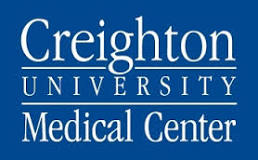Utility of Clinical Examination in the Noninvasive Prediction of Aortic Atheroma - A Prospective Study
| Status: | Recruiting |
|---|---|
| Conditions: | Peripheral Vascular Disease, Cardiology |
| Therapuetic Areas: | Cardiology / Vascular Diseases |
| Healthy: | No |
| Age Range: | 19 - Any |
| Updated: | 5/5/2014 |
| Start Date: | February 2005 |
| Contact: | Manu Kaushik, MD |
| Email: | manukaushik@creighton.edu |
| Phone: | 402-280-4566 |
Aortic atheroma has been correlated with traditional cardiac risk factors, coronary,
carotid, renal and peripheral atherosclerosis, and is probably a manifestation of
generalized atherosclerosis. Aortic atheroma has also been shown to be associated with
atrial fibrillation, aortic valve sclerosis, and other calcification of the fibrous skeleton
of the heart. None of the previous studies have looked at the noninvasive prediction of
aortic atheroma using the history and physical signs of cardiovascular disease. This would
be a time and cost-effective bedside diagnostic tool that would be useful prior to cardiac
surgery, cardiac catheterization, and workup of ischemic stroke patients, especially when
transesophageal echocardiogram (TEE) is being considered for diagnosis but cannot be
obtained due to previously mentioned reasons. Although physical examination of peripheral
vascular disease is non-specific, a combination of physical examination signs increases the
probability of generalized atherosclerosis.
carotid, renal and peripheral atherosclerosis, and is probably a manifestation of
generalized atherosclerosis. Aortic atheroma has also been shown to be associated with
atrial fibrillation, aortic valve sclerosis, and other calcification of the fibrous skeleton
of the heart. None of the previous studies have looked at the noninvasive prediction of
aortic atheroma using the history and physical signs of cardiovascular disease. This would
be a time and cost-effective bedside diagnostic tool that would be useful prior to cardiac
surgery, cardiac catheterization, and workup of ischemic stroke patients, especially when
transesophageal echocardiogram (TEE) is being considered for diagnosis but cannot be
obtained due to previously mentioned reasons. Although physical examination of peripheral
vascular disease is non-specific, a combination of physical examination signs increases the
probability of generalized atherosclerosis.
Inclusion Criteria:
- All consecutive patients who are referred for transesophageal echocardiography (TEE)
since the primary endpoint is diagnosis of aortic atheroma on TEE
Exclusion Criteria:
- No exclusion after consent for TEE is obtained. Decision not to perform TEE at the
discretion of treating physician
We found this trial at
1
site
Creighton University Medical Center St. Joseph's Mercy Hospital was founded on September 25, 1870 at...
Click here to add this to my saved trials
